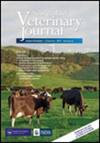Fetal maceration in a Stationbred mare.
IF 1.1
4区 农林科学
Q3 VETERINARY SCIENCES
引用次数: 0
Abstract
Fetal maceration is the disintegration of a fetus that has died after the formation of fetal bones and has failed to abort, despite the presence of an open cervix (Purohit and Gaur 2011). Fetal maceration is commonly seen in domestic species but rarely in the mare (Burns and Card 1998; Imani and Vosough 2018; McNaughten and Wallace 2019). Depending on the cause of in utero fetal death, the outcome may be abortion, maceration or mummification. Abortion (pregnancy loss between 35 and 330 days of gestation) occurs in 7–14.2% of mares (Sanderson and Allen 1987; Morris and Allen 2002). A small study conducted in the Waikato region of New Zealand recorded a pregnancy loss of 3% between day 42 of gestation and term (Hanlon et al. 2012). Mummification occurs when endocrine support to maintain the pregnancy is present. When endocrine support is lost, abortion (fetus is expelled) or maceration (fetus is retained) occurs. Failure to expel the dead fetus can be caused by uterine inertia, fetal malpositioning, inadequate cervical dilation or other pathological processes (Vézina et al. 1975). Surprisingly, and unlike retention of fetal membranes, uterine retention of a macerated fetus rarely causes systemic illness in the mare despite the presence of bacteria and purulent material. It has been proposed that the lack of systemic illness is due to the quick healing of the endometrium after placental separation, which prevents the absorption of toxic material and bacteria into the mare’s systemic circulation (Burns and Card 1998). Despite this, fetal bones may embed in the uterine wall, which can increase leakage of toxins into the bloodstream, causing a serious health risk (Imani and Vosough 2018). Here we describe a further case of fetal maceration in a mare to add to the available information on the clinical presentation and treatment of this unusual condition. A 14-year-old maiden, pregnant Stationbred mare in a remote region of New Zealand was presented with purulent vulvar discharge at 276 days since the last service date (LSD). Upon clinical examination, her vital parameters were within normal limits and examination of the external genitalia revealed no mammary gland development, normal perineal conformation and a moderate amount of purulent discharge at the ventral aspect of the vulva and on her tail. With a recommendation to bring the mare to a nearby facility with stocks where vaginal and rectal examination could be conducted safely, the mare was started on 12 mg/kg procaine penicillin (Ilium; Troy Laboratories Pty Ltd., Glendenning, Australia) I/M twice daily for 3 days and 2 mg/kg phenylbutazone (Caledonian Holdings, Auckland, NZ) orally twice daily for 3 days. Once the course of procaine penicillin was completed, the mare was continued on 3 g trimethoprim and 15 g sulfadimidine (Trimsulp powder; PhoenixPharm, Auckland, NZ) orally twice daily for 20 days. Ten days later transrectal examination was performed. The foal could be balloted and transrectal ultrasound confirmed fetal movement. Referral to an equine veterinarian for further evaluation and treatment was recommended. The mare was presented to an equine referral facility 299 days after the LSD. She had a body condition score (BCS) of 7/9 and her vital parameters were within normal limits. A malodorous, thin, brown vulvar discharge was present at the ventral aspect of the vulva and tail. On transrectal palpation, the cervix felt moderately tight, the foal could be balloted in the uterus and movement of the foal was evident. Referral to an equine hospital for transabdominal and transrectal ultrasound to perform a full assessment of both fetal and placental health was offered but declined by the owner. A swab was taken of the vulvar discharge and a scant growth of Escherichia coli, non-haemolytic streptococci and coagulase-negative staphlococci were isolated. Antibiotic sensitivity was performed, and all isolates were sensitive to enrofloxacin, gentamicin and ceftiofur. The E. coli was penicillin-resistant; the Staphylococcus spp. was trimethoprim/sulfadimidineresistant, and the non-haemolytic streptococci were tetracycline-resistant. The mare was started on 0.044 mg/kg altrenogest (Caledonian Holdings) orally once daily, and continued on the same dose of trimethoprim/sulfadimidine and 1 mg/kg phenylbutazone (Caledonian Holdings) orally once daily. The owner was asked to monitor the mare closely and contact the veterinarian if she did not foal down within the next 8 weeks. The mare did not foal down within the following 8 weeks. The owner continued antibiotic treatment静止母马的胎儿浸渍。
本文章由计算机程序翻译,如有差异,请以英文原文为准。
求助全文
约1分钟内获得全文
求助全文
来源期刊

New Zealand veterinary journal
农林科学-兽医学
CiteScore
3.00
自引率
0.00%
发文量
37
审稿时长
12-24 weeks
期刊介绍:
The New Zealand Veterinary Journal (NZVJ) is an international journal publishing high quality peer-reviewed articles covering all aspects of veterinary science, including clinical practice, animal welfare and animal health.
The NZVJ publishes original research findings, clinical communications (including novel case reports and case series), rapid communications, correspondence and review articles, originating from New Zealand and internationally.
Topics should be relevant to, but not limited to, New Zealand veterinary and animal science communities, and include the disciplines of infectious disease, medicine, surgery and the health, management and welfare of production and companion animals, horses and New Zealand wildlife.
All submissions are expected to meet the highest ethical and welfare standards, as detailed in the Journal’s instructions for authors.
 求助内容:
求助内容: 应助结果提醒方式:
应助结果提醒方式:


